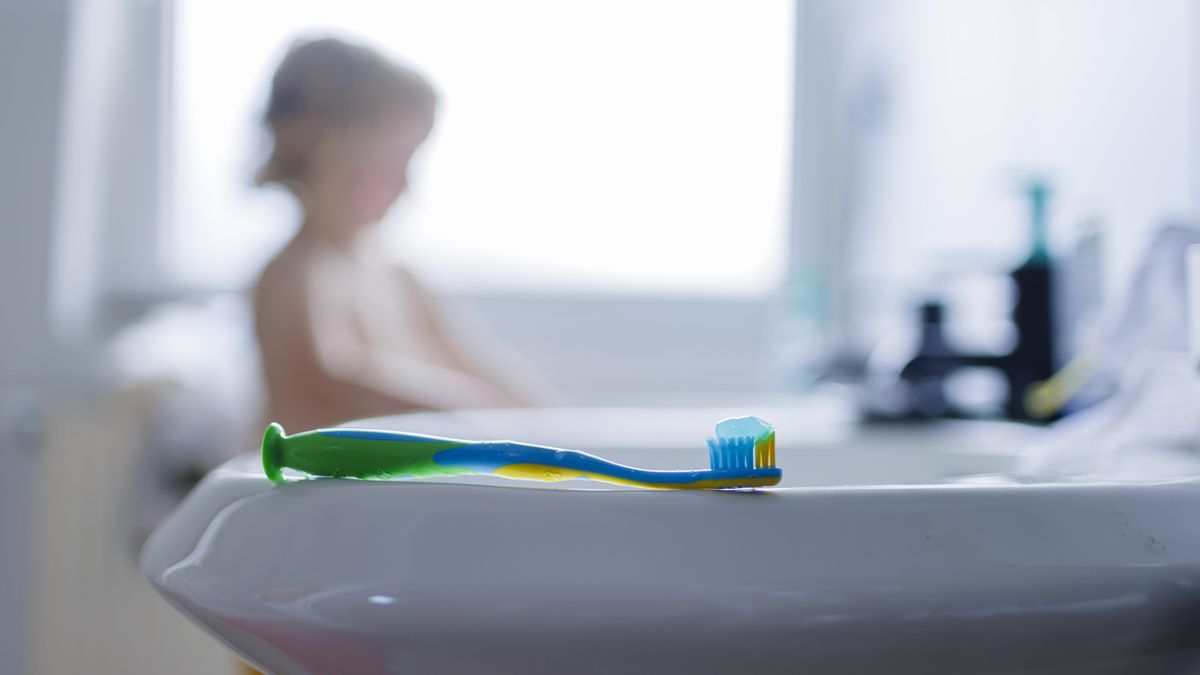Researchers from Northwestern University discovered over 600 different viruses inhabiting showerheads and toothbrushes. These bacteriophages specifically target bacteria, a previously untapped microbial diversity in our homes.

Also Read: Breakdancers Warned to Many Headspins Could Give them a Cone-Head
The study was published in the journal Frontiers in Microbiomes, examined biofilm samples from 92 showerheads and 34 toothbrushes. These biofilms are glue-like communities of microorganisms including bacteria and viruses, that cling to surfaces.
According to Erica Hartmann, the lead researcher from Northwestern University, the number of viruses identified was absolutely wild. Many of the discovered are poorly understood and some have never been seen before.
In a Northwestern University-led study, researchers collected samples from 96 showerheads and 34 toothbrushes across various homes in the United States.
These common household items harbored 614 different viruses. Many of these viruses are entirely new to science, showing the incredible diversity that exists even in everyday environments like bathrooms.
The research team led by microbiologist Erica M. Hartmann described the sheer number of viruses found as wild.
The identified in the study are bacteriophages often shortened to phages. These are viruses that infect bacteria not humans.
Bacteriophages have gained attention in recent years for their potential in phage therapy, an emerging field where viruses are used to fight antibiotic-resistant bacterial infections.
With the rise of antibiotic resistance becoming a global health concern, the newfound diversity of bacteriophages in bathrooms could provide valuable materials for future medical applications in combating harmful bacteria that have developed resistance to conventional treatments.
One of the study’s findings is the lack of overlap in the types of viruses found in different samples.
Researchers said that each toothbrush and showerhead was like its own little ecosystem with minimal similarity in the types of viruses present across different homes or even between toothbrushes and showerheads in the same home.
This suggests that every household creates a unique microbial environment influenced by factors such as water sources, household members and possibly the bacterial communities within each space.
The research identified mycobacteriophages as one of the most common types of bacteriophages in bathroom environments.
Mycobacteriophages specifically target mycobacteria, a group of bacteria that includes disease-causing germs responsible for conditions such as tuberculosis, leprosy and chronic lung infections.
This discovery holds potential for healthcare applications. The ability to harness mycobacteriophages could lead to novel ways to clean pathogens from plumbing systems or even treat difficult bacterial infections in humans.
According to Hartmann, these could someday be used to develop treatments for diseases caused by mycobacteria, an alternative to traditional antibiotics in a world increasingly threatened by antibiotic resistance.
While the study ventured into the relatively uncharted microbial territory of household bathrooms. Microbes are everywhere and most of them are harmless.
Scientists estimate that there are 1 trillion species of microbes on Earth, 99.9% of which remain undiscovered.
The viruses found on toothbrushes and showerheads in this study represent just a tiny fraction of the microbial world, which exists in abundance in every environment from tropical rainforests to the deep ocean and even our homes.
Also Read: COVID-19 Increases Risk of Heart Attack and Stroke for Up to 3 Years
In the United States alone, over 2.8 million antimicrobial-resistant infections occur annually, while the World Health Organization has labeled the issue as a critical global threat.
Without effective antibiotics, routine medical procedures such as surgeries, cesarean sections and chemotherapy could become much riskier due to the chance of infections that cannot be treated with existing medications.
The discovery of phages on everyday items like toothbrushes and showerheads offers a new avenue of research that could lead to innovative treatments for these superbugs.
To identify the viruses present on showerheads and toothbrushes, researchers used advanced DNA sequencing techniques. By analyzing the genetic material from the samples, they were able to map out the bacterial and viral communities living on these surfaces.
The research team employed complex computer models to analyze the data. According to Joe Parker, a senior research fellow at the UK’s National Biofilms Innovation Centre, these models revealed a massive amount of previously unknown information about the viruses living in these biofilms.
Hartmann noted that every sample taken from toothbrushes and showerheads contained a unique constellation of microbes, suggesting that the microbial communities on these items may be as individualized as a fingerprint.
Some viruses may even be endemic to a specific toothbrush and exist nowhere else on Earth.
Hartmann and her team address that the vast majority of these microbes do not pose a threat to human health. There is no need to panic or resort to harsh disinfectants.
Instead, Hartmann recommends simply soaking showerheads in vinegar or cleaning them with soap and water to remove any calcium buildup.
Similarly, regularly replacing toothbrush heads is advised for general hygiene. Hartmann also cautions against the use of antimicrobial toothbrushes, noting that overusing antimicrobial products can lead to the emergence of antibiotic-resistant bacteria.
Also Read: Victor Ambros and Gary Ruvkun Win 2024 Nobel Medicine Prize






















